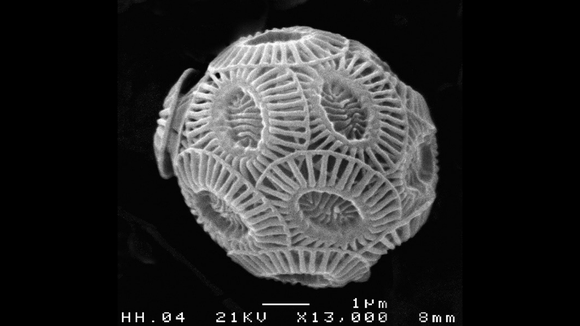Threatened with extinction
The asteroid, which killed most dinosaurs, left Earth in darkness for probably up to two years. The impact launched dense clouds of ash and other particles into the atmosphere, which then spread across the planet. Without sunlight, no photosynthesis was possible during this period. Without this process, where a plant or algae uses sunlight to convert CO2 and water into food, it is estimated that most of the plant and algae species on Earth became extinct. This included most of the phyto plankton called coccolithophores.
Alternative food sources
Coccolithophores use photosynthesis to survive and grow. Yet we also find these algae deep in the water where almost no sunlight can reach. They even survive for up to 30 days in a dark lab. Scientists at the Bigelow Laboratory for Ocean Sciences examined these remarkable properties. They concluded that these algae probably absorb substances from the environment. By turning these substances into nutrients, they are able to survive without any sunlight.
Important algae
And that's a good thing. Coccolithophores are indispensable for the survival of all other life on earth. As phytoplankton, they form the base of the food chain. Phytoplankton is eaten by zooplankton and a large variety of sea animals that we eat, for example. In addition, they also convert enormous amounts of CO2 into oxygen via photosynthesis. In fact, it is estimated that up to 70% of the oxygen on Earth is made by phytoplankton. This research shows that these indispensable microbes are extremely flexible and able to adapt to even the most challenging conditions. This flexibility makes microbes essential to Earth's history (and future).

